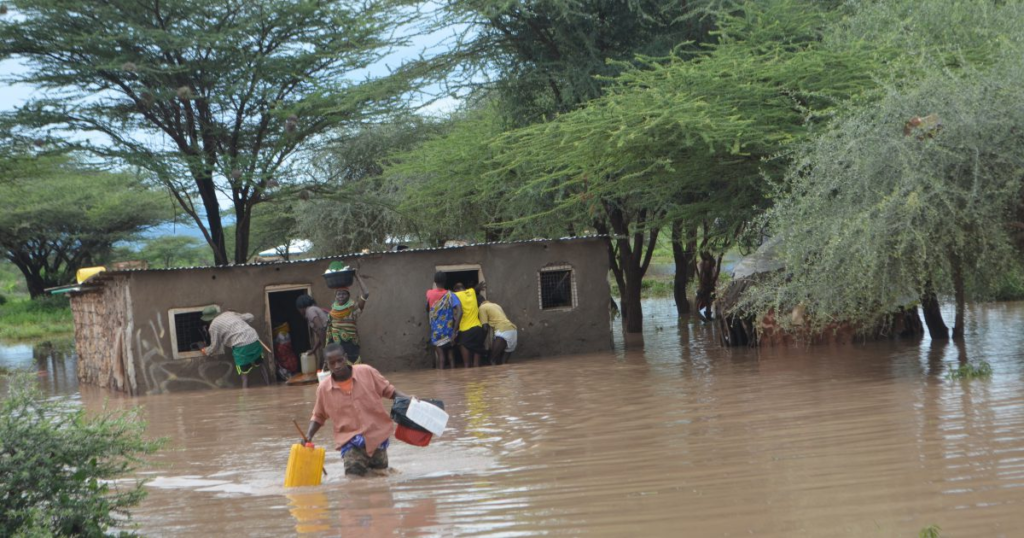In a distressing turn of events, the Horn of Africa has been battered by intense rainfall, a consequence of the El Niño weather phenomenon. The devastating floods have claimed the lives of at least 46 individuals in various parts of Kenya, with Deputy President Rigathi Gachagua confirming that over 80,000 households have been affected, and these numbers are steadily rising.
Government Response and Urgent Pleas
Deputy President Rigathi Gachagua has declared the situation a crisis, emphasizing the government’s commitment to saving lives. In a statement issued on Sunday, he urged the public to exercise caution, avoid floodwaters, and evacuate from low-lying areas. The government has mobilized emergency services, including helicopters, to deliver aid and rescue marooned families. However, challenges persist as heavy rainfall is expected to persist into the first quarter of the coming year.
Transportation Woes and Economic Impact
The floods have not only claimed lives but have also wreaked havoc on transportation infrastructure. Rail cargo services to and from the vital port city of Mombasa have been brought to a standstill due to floods and landslides. Kenya Railways, the state-owned rail operator, reported unexpected delays in deliveries to Mombasa port and along the cargo rail line to Nairobi. A landslide along the rail line between Mombasa and Nairobi has forced the closure of that section for all freight trains, significantly impacting normal train operations.
The consequences of these disruptions extend beyond Kenya’s borders, affecting neighboring landlocked countries such as Uganda, South Sudan, and Rwanda, which rely on Mombasa’s port and railway cargo line. The closure of the railway for freight trains has created a bottleneck, impacting the timely transfer of goods and affecting various industries.
Humanitarian Crisis and International Response
The humanitarian impact of the floods is escalating, with British charity Save the Children reporting that more than 100 people, including 16 children, have lost their lives, and over 700,000 individuals have been displaced in Kenya, Somalia, and Ethiopia. The situation in Somalia is particularly dire, with the number of displaced people nearly doubling in just one week, reaching 649,000, according to the UN Office for the Coordination of Humanitarian Affairs (OCHA).

El Niño’s Role in the Crisis
El Niño, characterized by warming ocean surface temperatures in the eastern and central Pacific, is the culprit behind the extreme weather events, from wildfires to tropical cyclones and prolonged droughts. East Africa is currently grappling with its destructive consequences, leading to flash floods, landslides, and widespread displacement of communities.
Local Perspectives and Criticisms
As the rains continue to pound the coastal city of Mombasa, frustrations among residents are rising. Some blame the government for inadequate drainage systems, asserting that homes are being destroyed due to the failure to unblock and repair drains. Civil engineer David Jomeli criticizes both national and county governments for allowing construction along sewerage lines, exacerbating the flooding woes in areas like Kisauni.
Latest Updates and Rail Operations Changes
In the most recent developments, Kenya Railways has announced operational changes on the Standard Gauge Railway (SGR) due to the ongoing heavy rains. A section of the SGR corridor between Mombasa Terminus and Mariakani has been closed due to a landslide. Passenger trains will continue to operate through this section under limited speed restrictions and strict supervision. The corporation assures the public that efforts are underway to restore normal services, and emergency plans have been implemented to enhance safety.
In Conclusion
The East African region finds itself in the grip of a natural disaster, with the El Niño-induced rains wreaking havoc on communities, infrastructure, and economies. As the death toll rises and displacement continues, urgent and coordinated efforts are required from governments, international organizations, and local communities to mitigate the immediate impact and establish long-term strategies for resilience in the face of such climatic challenges.